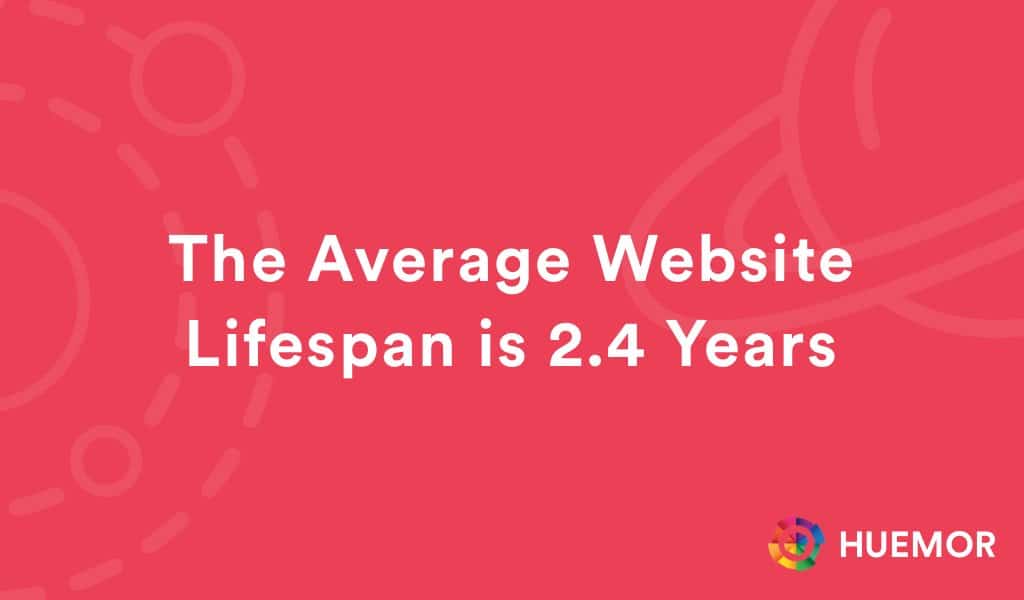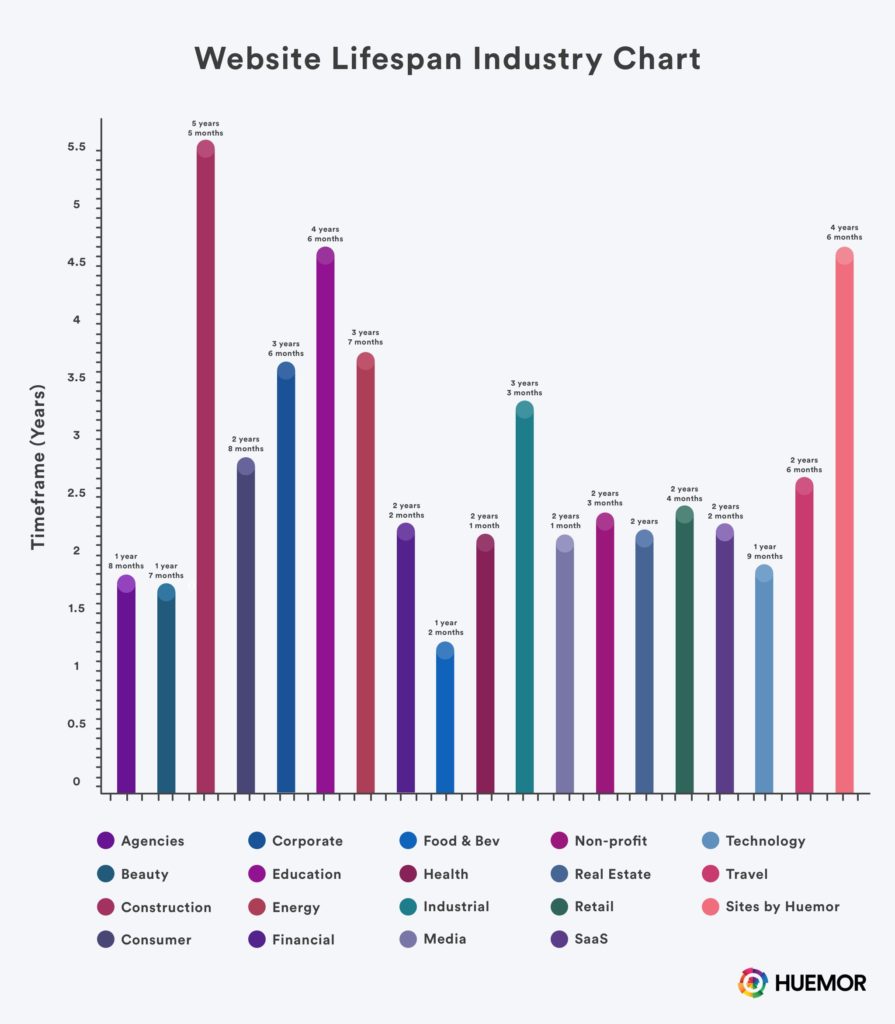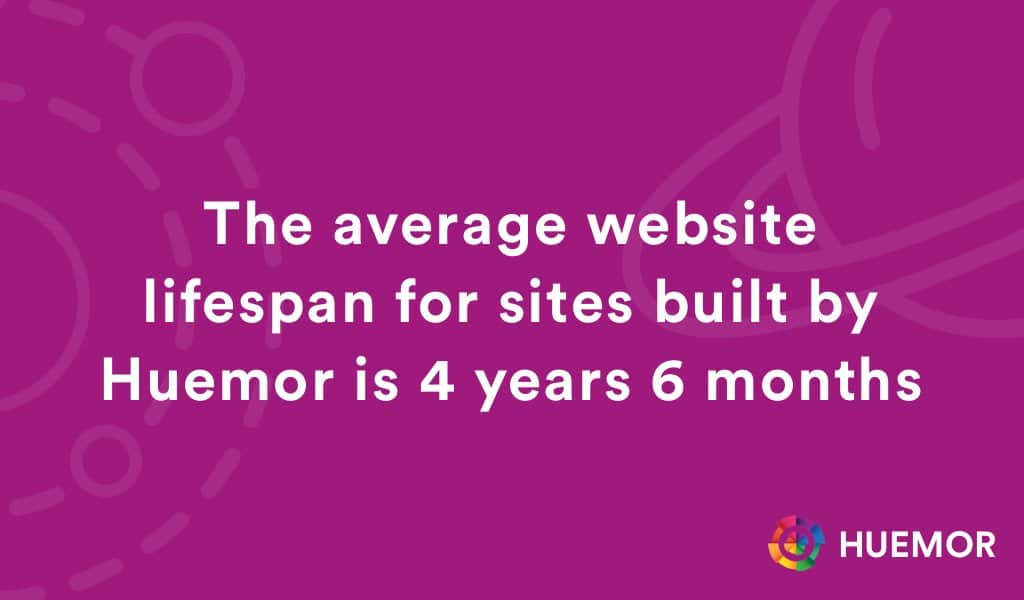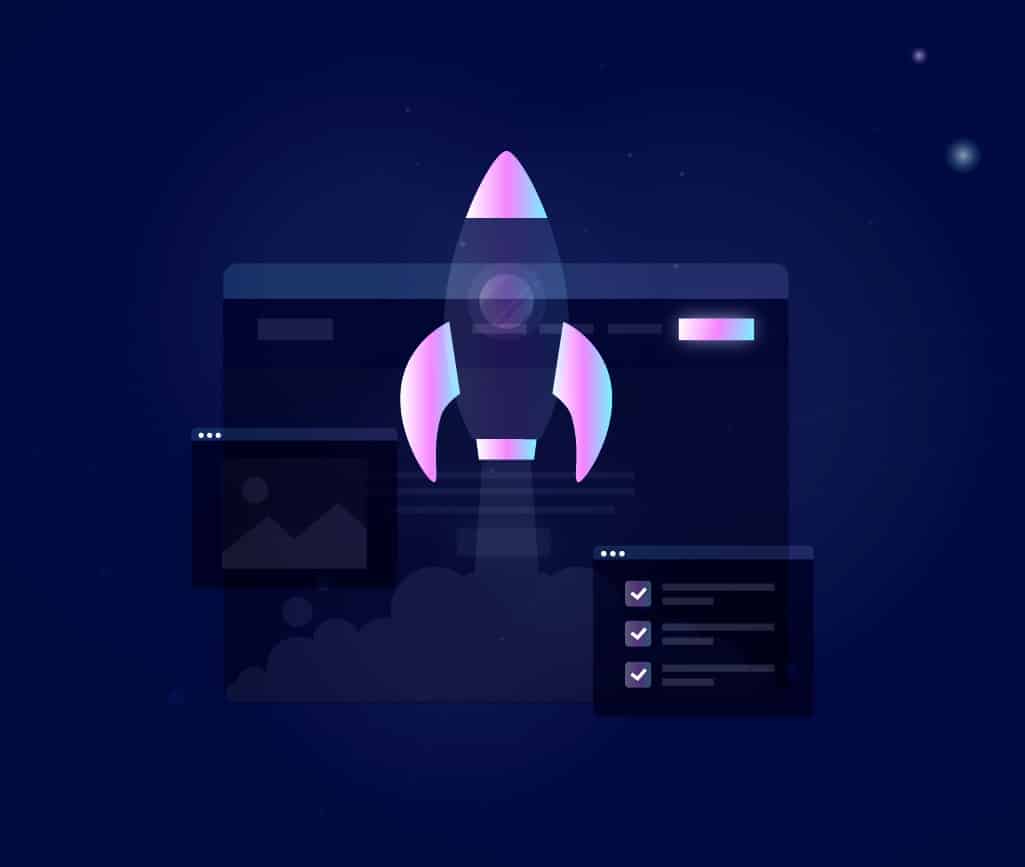Strategy
7 minute read
What is the Average Website Lifespan? + 6 Ways to Increase It.
LAST UPDATED:
November 13, 2023


Websites are typically a considerable investment of time and money for most organizations. To make sure you’re making the most of both, you want to at least be average, right?
Well then, that begs the question — what is the average lifespan of a website?
For the purpose of this article, when we say ‘average website lifespan,’ we’re effectively referring to the average time a website remains mostly unchanged before undergoing a complete website redesign.
We decided to take a fresh look at the topic with more up-to-date information focused on small businesses that are the most successful. This article is the culmination of our research.
For our dataset, we choose to review the top 500 websites from this year’s INC 5000, along with several dozen of our client websites with the Wayback Machine.
We examined the design and layout of each site over a specific period and calculated the time between significant website redesigns.
What did we discover?
The overall average lifespan of a website has been shortened to 2 years and 4 months (11% less than previously benchmarked by older studies).

As mentioned, our research involved observing the top 500 websites on the INC 5000 list and a few dozen of our own clients to determine the life expectancy of websites by industry. Here’s what we found:

- Agencies: 1 year, 8 months
- Beauty: 1 year, 7 months
- Construction: 5 years, 5 months
- Consumer products & services: 2 years, 8 months
- Corporate: 3 years, 6 months
- Education: 4 years, 6 months
- Energy: 3 years, 7 months
- Financial: 2 years, 2 months
- Food & beverage: 1 year, 2 months
- Health: 2 years, 1 month
- Industrial & manufacturing: 3 years, 3 months
- Media & publishing: 2 years, 1 month
- Non-profit: 2 years, 3 months
- Real estate: 2 years
- Retail: 2 years, 4 months
- SaaS: 2 years, 2 months
- Technology/IT: 1 year, 9 months
- Travel & Hospitality: 2 years, 6 months
- Sites by Huemor: 4 years, 6 months
This data indicates that beauty brands, on average, appear to redesign their website most frequently, while construction companies redesign their websites least frequently.
We were also blown away to discover that websites built by us on average outperform the average lifespan by more than 60%.

Source: buechelstone.com
These are the primary factors that decide whether your website life cycle has completed its course and needs a redesign. Some of them have something to do with changes in your company, while others are concerned with developments in the web and industry.
Competitors and Industry
Over time, your competitors will innovate their websites with various improvements and communication to your company’s consumers. To stay competitive, you need to do the same.
If you haven’t looked at your competitors’ websites yet, now is an excellent time to start. You should adapt as the industry evolves to avoid becoming obsolete. Your website will be compared to those of your competitors by prospective consumers. As a result, you need to make sure that your website meets their expectations.
Some expectations can include making your site more modern and your SEO ranking better than other competitor sites.
Growing Business
As a business grows often, so does its site. You can add to an existing website to an extent, but there’s an upper limit to that. If your company has expanded its service or product line dramatically or shifted focus, it may be time for a redesign.
In recent years, the number of firms that switched from B2B (business to business) to B2C (business to customer) has increased dramatically. This kind of transition demands significant changes not only to your website but also to your entire digital marketing strategy.
Your company’s website serves as its virtual front door. It introduces you to prospective consumers and expresses how you can assist them. It articulates to visitors that your company exists to help them rather than your competition.
Technical Limitations
Minor, incremental technological improvements can help any business or website remain relevant, such as replacing a logo with a higher-resolution image. However, over the past five years, developments such as the transition to mobile internet use have made complete website redesigns necessary for most companies. Businesses need to design their website to be mobile friendly since the current trend consumers are interested in is in a mobile format.
It could be that your company has new third-party software that needs to be seamlessly integrated, or it could be that the website simply doesn’t allow your staff to manage it correctly. Whatever the reason, technology has limited you, and you need a change. Users will leave websites that take too long to load or are poorly arranged.
Poor Planning
If the website redesign plan has initially been mismanaged, you might find yourself needing a change sooner rather than later.
The most common reason for a website redesign’s failure is a lack of planning. Regardless of the size of your business or industry, it’s essential that you address your website redesign strategically. Know what doesn’t work, what does, and what you want to accomplish.
Protip
Take a look at our Website Redesign Guide. It gives you everything you need to know about properly planning your website redesign.
There are techniques for refreshing the appearance of your website by months or even years. Here are some tips for slowing down the aging process:
Adding and Subtracting Information
Visitors go to your website with the intent of completing a task or achieving a specific objective. Your website will need to be updated to accommodate changes in your company, rivals, industry, and user expectations as they arise.
Adding new information that is relevant or subtracting information that no longer promotes your company is one way to achieve this. You wouldn’t want visitors to discover content on your site that is no longer valid. Therefore it’s critical to keep your information up to date. Furthermore, maintaining your site will show Google that it is still active and will increase your visibility among users.
Protip
A great way of updating your current website is to clean up the design as well as the creative on the site. Through content management consumers will be able to find the content that matters to them as well as help to answer any questions they have about your company.
Redesign the Front Page
Redesign the very first page that users view. You have to start somewhere after all! Your prospective customer should be able to visit your front page and instantly understand what you do and whether they are a good match for your brand.
Add new photos that update the webpage and delete unnecessary images, graphics, and the like. Removing clutter from the first page makes a positive first impression on new and returning users. However, this is only a temporary solution since significant changes might throw the front page out of sync with the rest of your site.
Edit the Copy
Edit current copy on the website to take out unnecessary words or information. Update copy to reflect the current state of your company.
If a visitor arrives at your site as a result of a search, you must persuade them that your service or product is the most ideal option for them at the moment. Make sure your web copy is up to date to show that what you offer is relevant to their current demands.
Actively monitoring and adjusting your website copy, as well as adding new content, will not only earn you the loyalty and confidence of your visitors but will also help you rank well in Google.
Create New Assets
New photography or video can go a long way. Re-shooting products, people, or producing a new company video could add new life to your existing website without requiring you to re-do the templates. Introducing new content, images, or videos can refresh a site’s look. It’s a sensible move since these elements can be reused in the future website revamp.
Conversion Optimization
If you feel like everything is where it needs to be structurally, but sales or leads have slumped, consider conversion optimization services. These measured tests will focus on areas of the site with a strategic approach for improving conversion rates.
Conversion optimization helps increase the volume of highly qualified leads you acquire, boost revenue, cut acquisition expenses, get more value from your existing prospects and customers, and expand. Conversions can occur on your homepage, landing pages, blog, pricing page, and other areas of your website. Optimizing each area will help maximize the chances of turning visitors into paying customers.
Protip
Check out our article on Website Tips for E-commerce sites to learn more about maximizing your conversion optimization.
Update Your Website Navigation
Adding key pages or removing clutter from your navigation can really transform the user journey for your website. Depending on your CMS, this can be relatively easy to do.
Simplify the navigation by deleting the links that get the fewest number of clicks. A well-organized and clear navigation system serves as a guide for visitors to your site’s numerous pages and content. It is essential to persuade visitors to stay, consume your content, and have a great user experience, resulting in increased revenue and brand loyalty for your company.
Even if a business website is well-designed, it will need to be updated to remain a successful marketing tool. Updating your website and impressing your visitors while garnering renewed interest in your content is easier if you do it sooner rather than later.

Contact Us!
Looking for an upgrade or a way to prolong your website? Contact us or use our resources!
Get Memorable Insights.
Sign up to receive actionable web design advice directly in your inbox monthly.
Get Memorable Insights.
Sign up to receive actionable web design advice directly in your inbox monthly.
Author
Jeff Gapinski is the President of Huemor where he helps plan the long-term strategic growth of the agency. Jeff is passionate about UI/UX, demand generation, and digital strategy.
What Do You Think?
Have feedback? Maybe some questions? Whatever it is, we'd love to hear from you.




![Website Design Standards We Follow [That You Should Too!]](https://huemordev.b-cdn.net/wp-content/uploads/2021/12/2023.04.04.Website-Design-Standards-We-Follow-That-You-Should-Too.jpg)



No comments found